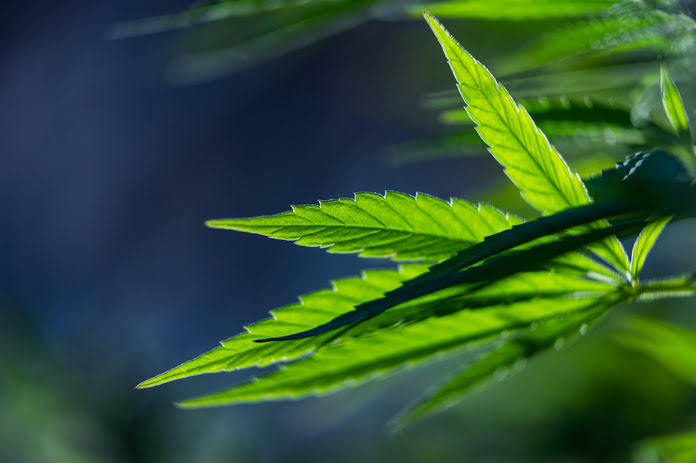Tilray Stock (NASDAQ:TLRY)
Canopy Growth (NASDAQ:CGC) and Tilray (NASDAQ:TLRY) are two sides of the same wonderful cannabis coin. In 2018, both companies went public, some months before Canada legalized recreational cannabis sales. Nearly five years later, the medical and recreational cannabis markets in North America have failed to live up to initial exuberant predictions, and both companies are trying to define bright futures against this backdrop. After Tilray reported its fiscal 2023 second-quarter results on November 30th, Canopy Growth has recently announced the results for its fiscal 2023 third quarter, which ends on December 31st, 2022. Financial results from both companies continue to illustrate the challenges and potential of the current cannabis zeitgeist.
As was previously stated, the Canadian cannabis sector is still inherently adverse to long-term shareholder value development because of its onerous laws and persistent illegal market. Are you looking to profit from a cannabis investment? Start focusing on the American market. However, the federal prohibition of cannabis has made this difficult. As a result, Tilray and Canopy Growth are still shut out of the massive US cannabis market, which is expected to hit more than $34 billion by 2025, or 5x higher than the size of the projected Canadian cannabis industry in the same year.
However, this year’s results for both equities will be driven mostly by their valuations. This has cycled between immense exhilaration and intense terror, with the downward trend lasting for over two years. Whether Tilray stock or CGC stock does better this year largely depends on how quickly investor confidence recovers. As a result, a comparable increase in the retrospective PS ratio would be applied to both stocks, giving them a greater market value. It’s easier to make money in the stock market by reading animal spirits; investors should look for firms with strong fundamentals like high profitability, strong momentum, and a solid balance sheet to buy.
Do Tilray’s and Canopy Growth’s Core Values Differ?
In the early hours of Tuesday, Canopy Growth announced its quarterly profits. With a market worth of $1.33 billion, this Smiths Falls, Ontario firm missed analyst projections by C$15.16 million on sales of C$101.21 million, a 28% year-over-year drop. After recently abandoning cannabis retail in Canada to concentrate on its infant US MSO Acreage Holdings (OTCQX:ACRHF) and several other US-based cannabis firms, there was more bad news: Canopy is slated to undergo another reorganization. During the most recent earnings call, management said they expect to generate an additional $140 million to $160 million in decreased operating expenditures over the following 12 months due to the current restructure.
As of October 17th, 2018, Canada’s legal recreational cannabis market began, and it is strictly regulated and severely taxed. As Canopy Growth CEO David Klein put it, business is “thriving” in the latter. Thus, with both legal and illegal operators vying for market share in Canada, the country has yet to reach the early high projections for its entire addressable market. Tilray’s revenue for the most recent reported quarter was $144 million, a fall of 7.1% year over year. This is due to the structural headwind that illicit sales account for around 40% of Canada’s total cannabis sales. The New York-based, $1.86 billion company has more varied operations outside the cannabis industry, including a sizable beverage alcohol sector that generated $21.4 million in revenue last quarter. Sales from the company’s wellness offerings hit $8.8 million, up 88% from the previous year, contributing to the 56% rise in overall revenue.
The two companies’ profitability became drastically different. Compared to a deficit of $17.1 million in the same period a year earlier, Tilray saw a surge in cash flow of $29.2 million from operations. Total capital expenditures were $4.5 million, a decrease from the $7.5 million spent in the same quarter last year, resulting in $25.4 million in free cash flow for the firm. Instead, they posted a loss of $0.06 per share, missing expectations by $0.01.
Free cash flow was a negative C$146 million for Canopy Growth in the third quarter. Despite a 13% improvement from the same time last year, this severely negative number significantly harmed its liquidity in the third quarter. This negative cash flow directly resulted from negative earnings per share of C$0.54, which was a huge miss of C$0.31 compared to market expectations.
In contrast to Tilray’s positive gross margin of 28%, Canopy Growth recorded a negative gross margin of 2% in its most recent reported quarter. Tilray’s massive pivot away from cannabis sales has widened this gap significantly. This gap may widen if Tilray invests more resources into its health and beverage division.
Cannabis Industry Future Prospects
Both businesses have begun extensive efforts to simplify their operations, save costs, and make their core businesses profitable in the long run. This process has progressed further at Tilray, with the business projecting yearly cash cost reductions of $119.6 million since the conclusion of its merger with Aphria. Consequently, there is still an opportunity to save roughly $10.4 million, even though the firm had previously guided for total cost reductions of around $130 million.
The amount of cash and equivalents held by Canopy Growth at the end of the quarter was C$789 million, down from C$1.4 billion in the same period last year. Canopy Growth is now reorganizing its operations to shift to a “more asset-light model” in Canada, where the company plans to outsource the production of cannabis-based edibles, vape cartridges, and extracts. As of the end of the second quarter, Tilray had $433.5 million in cash and equivalents, up from $331.8 million in the prior-year period.
What’s a better investment, Tilray stock or CGC stock? Tilray has a distinct investment thesis since it trades at a comparable valuation multiple to Canopy while having considerably stronger profitability and an excellent non-cannabis business. In this case, Tilray seems to be the superior investment, but I have no opinion either way. This year, discussions about financial outcomes have centered on the future of the cannabis industry. Both stocks may continue to decline if there is no progress toward the federal legalization of cannabis sales in the United States.
Featured Image: Freepik @ nigyray









